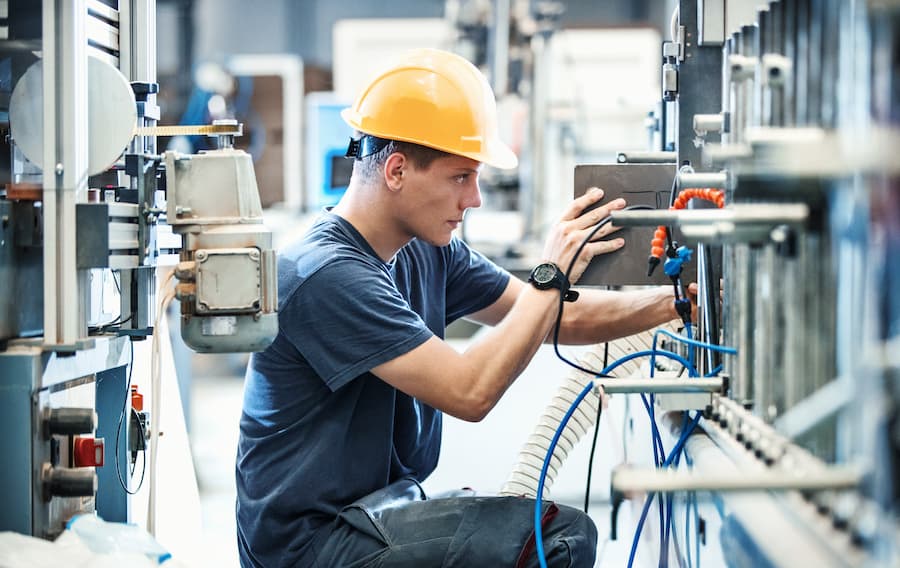Your industrial machinery can serve you efficiently for years with routine maintenance and prompt replacement of worn-out parts, saving you money. This is also essential for your employees’ safety, productivity, and efficiency. You can follow the following hints to maintain your industrial equipment well.
Preventative maintenance
Maintenance experts do preventive maintenance to stop failures before they start. Usually, this entails scheduling maintenance according to the usage of the machines or the calendar. The benefit of preventative maintenance is that machines are far less prone to break down. Given this, it is no surprise that 80% of maintenance technicians favor preventive maintenance over reactive maintenance because it is significantly simpler and less involved.
The drawback of preventive maintenance is that it frequently results in higher labor and component expenses. Also, time and money may be lostif the equipment doesn’t require maintenance. But when you look at it in the long run, keeping a stock of high-quality maintenance parts from Kor Pak prevents unexpected downtimes.
Response-based maintenance
Mechanical problems lead to the most unscheduled downtime, and aging equipment is frequently to blame. Your staff only performs maintenance using reactive maintenance when such emergencies arise. This means that once an asset stops working, your team rushes to fix it as soon as possible so you can resume production. Response-based maintenance is prevalent because it is more affordable upfront. After all, there is no need to engage additional maintenance personnel or pay for part replacements.
But companies that look at their finances over the long term often don’t rely on reactive maintenance. Reactive maintenance eventually results in further production losses and severe machinery damage. Unexpected downtime might also catch management off guard and put the company in a difficult situation.
Maintenance focused on reliability.
Reliability-centered maintenance is more of a proactive strategy. This method examines each machine independently, which differs from preventive maintenance. What equipment do you rely on the most? How frequently do they malfunction? What is their background?
An asset typically doesn’t need as much upkeep if it is regarded to be dependable. Your team can now focus their efforts (and resources) on more critical resources. Although reliability-centered maintenance requires data and tracking to function successfully, it can aid organizations in striking a better balance between costs and time.
Predictive maintenance
The most efficient industrial maintenance technique is predictive maintenance, which is also 8% to 12% less expensive than the preventive one and 40% less costly than reactive maintenance. Predictive maintenance leverages data and AI to forecast when a machine will break. This technology employs a combination of historical and real-time data to identify trends that an individual would overlook. Additionally, predictive maintenance cuts downtime and extends an asset’s life.
Condition-based upkeep
Condition-based maintenance is our last excellent method for performing preventative maintenance without superfluous updates. With condition-based performance, businesses employ tools and sensors to collect real-time information on their machines. This could entail taking measurements of boiler heat output or pipe pressure or doing inspections using specialized software. A technician is sent out to fix the machine before it fails if the system detects an anomaly.
Related posts

Recent Posts
- The Future of Automotive in the UK: Trends Driving Industry Evolution April 23, 2024
- The Future of Rummy: Trends and Predictions April 16, 2024
- 6 Questions to Ask Your Hardwood Flooring Installer March 28, 2024
- Inside Rinat Akhmetov Foundation’s Blogger Camp for Ukraine’s Young War Survivors February 29, 2024
- Driving Success: Exploring the Benefits of Golf Simulators for Businesses February 23, 2024
- UNLOCKING EFFICIENCY: YOUR GUIDE TO INDUSTRIAL EQUIPMENT MAINTENANCE November 8, 2023
- SELECTING THE RIGHT PUMP MATERIAL: FINDING THE PERFECT FIT FOR YOUR APPLICATION October 27, 2023



Stay connected